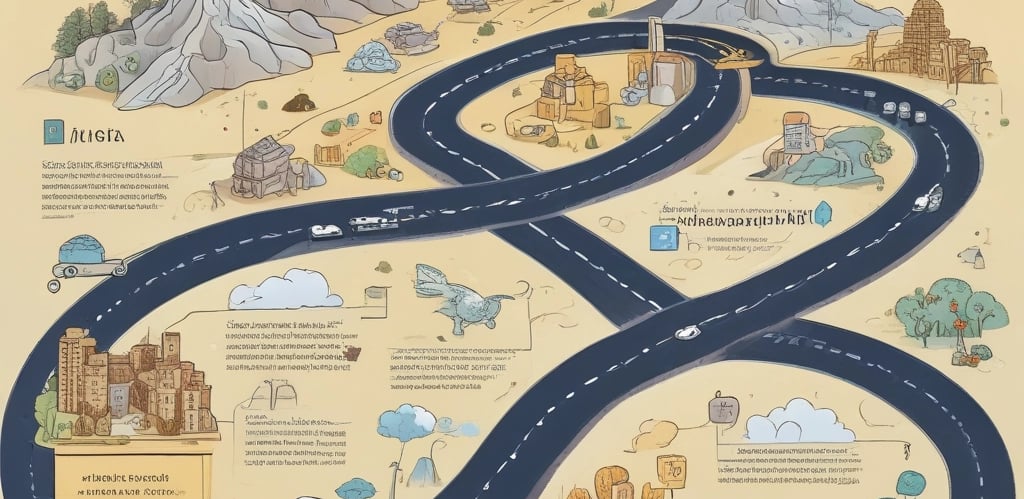The Beginner’s Roadmap to a Career in Data Science | Jeslin Lois
Feeling lost on where to start in data science? Jeslin Lois shares a clear roadmap of essential beginner skills — from Python basics to data visualization — to help you launch your career.
Jeslin Lois
5/8/20244 min read


What Skills Do You Need to Start a Career in Data Science?
1. The Overwhelm of Starting Out
When I first decided to step into the world of data science, I had one big question: Where do I even start?
Should I learn Python first? Or statistics? Should I master machine learning before even touching my first dataset?
If you’ve asked yourself the same questions, you’re not alone. The path to becoming a data scientist can feel overwhelming because there are so many buzzwords, courses, and tools thrown around. But here’s the truth: you don’t need to learn everything all at once. You just need to build the right skills in the right order.
In this post, I’ll break down the core skills every beginner needs to start a career in data science — and how you can start learning them without feeling lost.
2. Programming Basics (Start with Python)
Every data scientist needs to know how to code, and Python is the best place to start.
Why Python? Because it’s easy to learn, beginner‑friendly, and has the largest collection of libraries for data science. With Python, you can go from printing “Hello World” to analyzing thousands of rows of data in a few weeks.
Beginner Python skills to focus on:
Basic syntax (how Python code is written)
Variables and data types
Loops and conditional statements
Functions
Working with libraries like Pandas and NumPy
These fundamentals will form the foundation for everything you do in data science.
3. Data Handling and Cleaning
Once you know basic coding, the next step is learning how to handle and clean data.
Here’s a secret many beginners don’t know: most data scientists spend more time cleaning and preparing data than building machine learning models. Real‑world data is messy — missing values, incorrect entries, and inconsistencies are common.
Key skills to learn:
How to load data from files (CSV, Excel)
How to inspect and explore datasets
Handling missing or duplicate values
Basic data transformations (renaming columns, changing formats)
Libraries like Pandas will be your best friend here. Think of this as learning how to tidy your “workspace” before you start analyzing.
4. Statistics and Math Foundations
Don’t worry — you don’t need to be a math genius to start data science.
But you do need to understand some basic statistics. Why? Because data science is ultimately about interpreting numbers and making decisions based on them.
Focus on the following beginner topics:
Mean, median, and mode
Standard deviation and variance
Correlation and distributions
Basic probability concepts
Once you’re comfortable here, you’ll understand why models behave the way they do — and you’ll avoid treating machine learning as a black box.
5. Data Visualization
Numbers tell you what’s happening, but visualizations tell you the story.
Learning to create clear, simple visuals is one of the most underrated skills in data science. Charts and graphs make your insights understandable to others — whether that’s your manager, your team, or a client.
Start with:
Matplotlib for basic charts
Seaborn for more advanced, beautiful visuals
Learn how to create bar charts, scatter plots, and line graphs, then practice explaining what they mean in plain English.
6. Critical Thinking and Curiosity
This might be the most important skill on the list — and it’s not something you’ll find in a textbook.
Data science isn’t just about coding or statistics. It’s about asking the right questions before you even touch the data.
What problem am I trying to solve?
What does this dataset really represent?
Am I interpreting the results correctly?
Curiosity pushes you to explore further. Critical thinking stops you from drawing wrong conclusions. Together, they make you a better data scientist than any single programming language ever could.
7. Optional but Helpful: SQL and Databases
While not mandatory on day one, learning SQL will make you stand out.
Most companies store data in databases, and SQL is the language that lets you query and pull that data for analysis. You don’t need to master it right away, but knowing how to write simple SELECT queries will make your life easier later.
8. How to Learn Without Burning Out
Many beginners try to learn everything in one go — and end up quitting.
Here’s a better approach:
Start small. Spend your first few weeks just on Python basics.
Layer your learning. Add one skill at a time: Python → data cleaning → visualization → statistics.
Work on mini‑projects. Apply what you learn immediately, even on small datasets like your daily expenses or Netflix watch history.
The goal isn’t to master everything overnight. It’s to keep moving, step by step.
9. Final Thoughts
Starting a career in data science can feel overwhelming, but it doesn’t have to be.
If you focus on the right skills — Python basics, data handling, simple statistics, visualization, and most importantly, curiosity — you’ll build a strong foundation for everything that comes after.
You don’t need to know everything to start. You just need to start — and keep building from there.
If this roadmap helped you see the bigger picture, share it with someone else who’s thinking about starting their own data science journey.
And stay tuned — I’ll be breaking down each of these skills in future posts with beginner‑friendly tutorials to help you go from curious learner to confident data scientist.